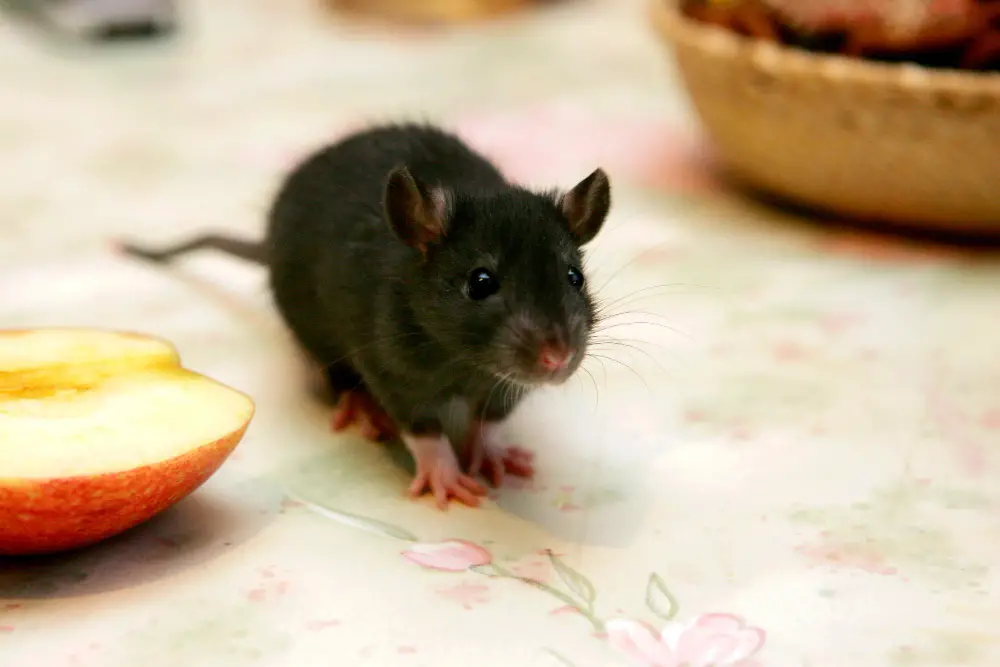Last updated on
Creating a pest-free home is crucial for both health and comfort, impacting our well-being and peace of mind.
Beyond the immediate annoyance, pests like roaches, ants, and rodents can carry diseases, triggering allergies and other health issues.
As we strive for comfortable living spaces, the integration of aesthetics with functionality emerges as a sophisticated strategy to deter pests. This approach not only ensures our homes are inviting and stylish but also fortifies them against unwanted invaders.
What's Inside
The Enemy at Home: Identifying Common Pests

Household pests are a varied group, each with unique behaviors and preferred environments. Roaches, known for their resilience, are pervasive across various climates, particularly thriving in warm and humid conditions. Ants, rodents, mosquitoes, and termites also top the list of nuisances, infiltrating homes in search of food, water, and shelter.
Roaches
In the U.S., certain areas are more prone to roach infestations than others. For instance, Houston has seen significant percentages of households reporting roach presence, with a notable 37.03% in recent years. Conversely, Portland boasts a lower incidence rate, demonstrating how geography plays a role in pest prevalence.
Rodents
Rodents not only pose a threat by consuming and contaminating food supplies but also carry diseases and other pests like mites and ticks. Their ability to cause structural damage and start fires by gnawing on electrical wires further underscores the importance of control measures.
Pest Infestation Trends
Statistics reveal the persistent challenge of pest infestations. For example, roach and rodent sightings in homes account for significant percentages, highlighting the widespread nature of these issues across the country.
The economic impact is substantial, with billions spent annually on pest control, repairs, and food losses due to rodent activity.
Understanding these common pests and recognizing the patterns of infestation are the first steps toward safeguarding our homes.
Designing Against Pests: Room-by-room Strategies
Creating a pest-resistant home involves strategic design and material choices across every room. Here are some targeted strategies for each area of your home to keep pests at bay, blending functionality with style.
Kitchen
- Material Selection: Opt for non-porous materials for countertops and cabinets, such as quartz or metal, which do not provide crevices for pests to hide.
- Storage Solutions: Use airtight containers for food storage to discourage pests like ants and roaches. Consider integrated storage solutions that keep pantry items sealed off.
- Easy-to-clean Surfaces: Select smooth, easy-to-wipe surfaces for backsplashes and floors to simplify cleaning of food spills and crumbs, reducing attractions for pests.
Bathroom
- Moisture Control: Install exhaust fans or ensure adequate ventilation to reduce humidity levels, deterring moisture-loving pests like silverfish and roaches.
- Fix Leakages: Regularly check and repair any leaking taps or pipes to avoid standing water, a breeding ground for mosquitoes.
- Sealed Fixtures: Choose toilets, sinks, and tubs that are easy to seal and caulk around, preventing pests from accessing hidden water sources.
Living Room
- Clutter-free Design: Opt for minimalist designs that minimize clutter, giving pests fewer places to hide. Use furniture with legs to keep fabrics off the floor, making the space less inviting to pests.
- Regular Cleaning: Incorporate easy-to-clean furniture materials and rugs that can be frequently vacuumed or cleaned to remove dust and pet dander that might attract pests.
Bedrooms
- Pest-resistant Bed Frames: Metal bed frames are less attractive to bedbugs compared to wooden ones. Choose designs that are sleek and have fewer hiding spots.
- Mattress Protectors: Use encasements for mattresses and pillows to deter bedbugs and dust mites.
- Under-bed Storage: Opt for sealed, dust-proof storage options to prevent pests from nesting in clothing or linens stored under the bed.
Outdoor Spaces: The First Line of Defense

Your home’s exterior plays a crucial role in pest prevention, acting as the first line of defense against invaders.
Patios and Entryways
- Materials: Choose outdoor furniture made from materials like metal or cedar, which are less appealing to pests. Ensure all wood surfaces are treated or painted to resist termites.
- Sealing Gaps: Seal cracks and gaps around doors, windows, and utility entries to prevent pests from sneaking inside.
Gardens and Landscaping
- Pest-repelling Plants: Incorporate plants known to repel pests, such as lavender, marigolds, and citronella, into your garden design.
- Proper Drainage: Ensure your garden has proper drainage to avoid standing water, which can attract mosquitoes. Use gravel or sand in areas prone to puddling.
- Barrier Plants: Use certain plants as natural barriers around your property’s perimeter to deter pests. For example, chrysanthemums contain a natural insecticide that deters roaches, ants, and ticks.
By integrating these strategies into your home’s design, you can create a stylish yet functional space that naturally deters pests.
These measures, combined with regular maintenance and cleanliness, can significantly reduce the likelihood of pest infestations, ensuring your home remains a comfortable, healthy haven.
Materials Matter: Choosing Pest-resistant Options
Selecting the right materials for your home can significantly impact its susceptibility to pests. Materials that are less attractive to pests or that they cannot penetrate are essential in creating a pest-resistant environment.
Furniture and Flooring
Opt for materials like metal, glass, or solid wood, which are less appealing to pests such as termites and bed bugs. Avoid using soft fabrics and untreated wood that can easily become a home for pests.
Construction Materials
For construction, consider using pest-resistant wood treatments or alternative materials like composite decking for outdoor spaces, which resist rot and are less appealing to pests like termites.
Maintenance and Monitoring: Keeping Pests at Bay
Regular home maintenance and the use of innovative tools can help detect and manage pest activities early, without compromising the aesthetics of your home.
- Regular Inspections: Conduct regular inspections of your home for signs of pest activity. This includes looking for droppings, damaged wood, and checking damp areas for mold or mildew.
- Stylish Pest Control Solutions: There are numerous stylish and discreet pest control solutions available, such as ultrasonic repellents that can be integrated into home decor, and decorative traps that blend seamlessly with your home’s aesthetic.
When Pests Prevail: Integrating Professional Pest Control
Despite your best efforts, some pest infestations may require professional intervention. It’s crucial to act swiftly to prevent further damage.
- Seek Professional Help: If you notice signs of a severe pest infestation, it’s time to call in professional pest control services. Look for companies that use environmentally friendly methods if you’re concerned about the use of chemicals in your home.
- Design Integrity: Discuss with the professionals how to address the infestation with minimal disruption to your home’s design. Many companies offer solutions that are effective yet discreet, ensuring your home’s aesthetic is maintained.
The Takeaway
Creating a pest-resistant home involves a combination of choosing the right materials, regular maintenance, and being prepared to seek professional help when needed.
Maintaining a pest-free home not only contributes to your family’s health and well-being but also preserves the integrity and value of your property.




